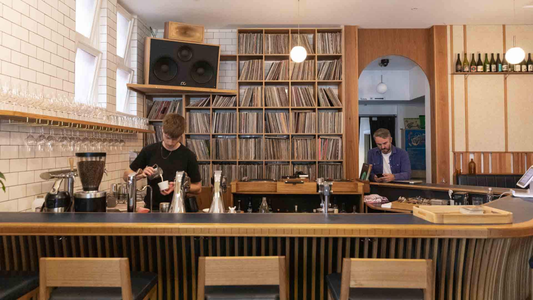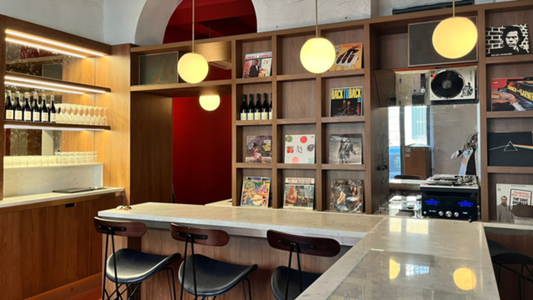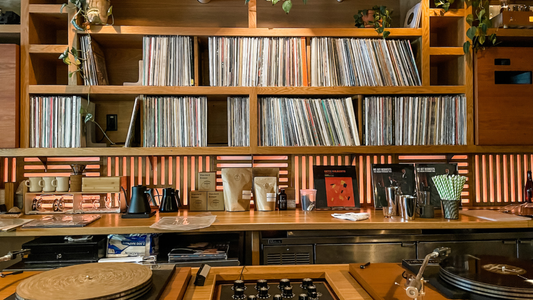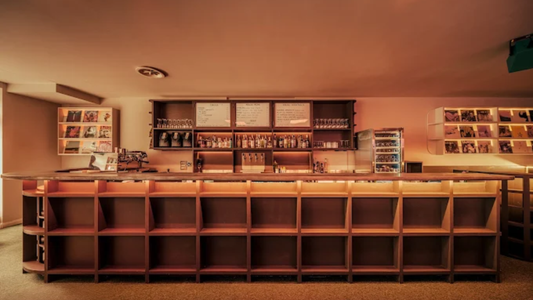
Tokyo to Brooklyn: How the Listening Bar Went Global
By Rafi Mercer
The story begins in Japan. In the 1950s, long before vinyl lounges were photographed for Instagram, there were jazz kissaten — small cafés where records were played with reverence. Post-war Tokyo was noisy, restless, rebuilding itself. In these rooms, listeners found stillness. Imported LPs from America — Coltrane, Davis, Mingus — were not just background music but cultural artefacts, expensive and scarce. To hear them was a privilege, and so the kissaten became temples of attention. Silence was expected. Coffee and whisky were served. The record was the event.
Fast-forward half a century, and the listening bar re-emerged. This time it was not only in Tokyo but across the world. Brilliant Corners in London borrowed the intimacy of the kissaten, adding natural wines and supper-club warmth. Public Records in Brooklyn built a cavernous space where sound systems are treated like architecture. In Barcelona, Jaç Hi-Fi Café anchors a community around vinyl and conversation. What began as a Japanese curiosity has become a global language of listening.
Why now? Partly because the culture of streaming has left people craving depth. We have music on demand, but the ease of access has made listening weightless. A listening bar reintroduces gravity. The cost is not monetary but temporal — an evening spent in one place, immersed in sound, without skip buttons or algorithms. In cities where time is fractured, that commitment feels radical.
There is also the appeal of tactility. Vinyl sales have climbed, but listening at home is solitary. In a bar, the ritual becomes communal. You watch the selector draw a record from its sleeve, you hear the stylus drop, you feel the collective hush as a groove comes alive. In Tokyo, you sense the weight of tradition; in Brooklyn, you feel the new-world energy of reinvention. Both share the same DNA: a belief that music deserves to be foreground, not background.
From Tokyo to Brooklyn, the aesthetic shifts but the principle endures. Some spaces are austere, others lush. Some prioritise cocktails, others whisky. Some lean into jazz, others electronic. Yet all share the conviction that fidelity matters — that sound should be experienced in three dimensions, with space, weight, and presence.
It is tempting to call it a trend. But in truth, the listening bar is more enduring than that. It is part of a lineage: from Japanese kissaten to European salons, from American jazz clubs to modern audiophile bars. Each generation rediscovers the need for places where listening is not a distraction but a destination.
To trace the arc from Tokyo to Brooklyn is to see how music binds cultures, reshapes cities, and creates sanctuaries of attention in an inattentive world. Wherever you go — Shibuya, Dalston, Gowanus — you’ll find the same ritual. A stylus lowered. A pause. And then, in that first soundwave, a room becoming a community.
Rafi Mercer writes about the spaces where music matters. For more stories from Tracks & Tales, subscribe, or click here to read more.







